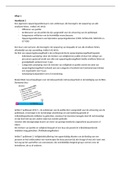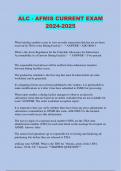Samenvatting
Management en organisatie samenvatting
- Vak
- Instelling
Dit document bevat een samenvatting van de slides van prof. Johanna Vanderstraeten, gecombineerd met de notities gemaakt tijdens de lessen van het eerste semester van academiejaar .
[Meer zien]












